Partial dentures vs implants is a common dilemma faced by those who are dealing with tooth loss. Losing teeth can be an emotionally and physically challenging experience, one that affects not only your ability to eat and speak but also your confidence and overall quality of life. Fortunately, modern dentistry provides a variety of solutions to restore smiles and oral function. Among these solutions, partial dentures and dental implants stand out as two of the most popular options. Each has its unique set of advantages and disadvantages, demanding careful consideration of individual needs, preferences, and financial circumstances.
This article delves into the intricacies of both partial dentures and dental implants, providing a comprehensive overview that empowers you to make informed decisions based on your specific situation. From definitions and types to benefits, drawbacks, costs, and long-term implications, we will explore every facet of this crucial decision in oral health.
Overview of partial dentures
Partial dentures serve as a valuable solution for restoring missing teeth within a dental arch. They are designed not just to enhance aesthetics but also to improve functionality, enabling individuals to engage fully in their daily lives without the burden of missing teeth.
Definition and types of partial dentures
Partial dentures are removable dental prosthetics that replace one or more missing teeth while preserving the remaining natural teeth. There are generally two main types of partial dentures:
Conventional Partial Dentures: These are the most widely utilized type of partial dentures. They consist of artificial teeth mounted on a gum-colored base, typically made of acrylic or nylon resin. Metal clasps are used to anchor the dentures to adjacent natural teeth, providing stability and support. They are known for their durability and affordability, making them a popular choice among patients.
Flexible Partial Dentures: As materials and technologies have advanced, flexible partial dentures have emerged. These newer designs utilize a flexible resin base, often eliminating the need for metal clasps. This design not only enhances comfort but also offers a more aesthetically pleasing option for many users. Individuals with sensitive gums or metal allergies may find flexible partial dentures particularly advantageous due to their softer, less abrasive nature.
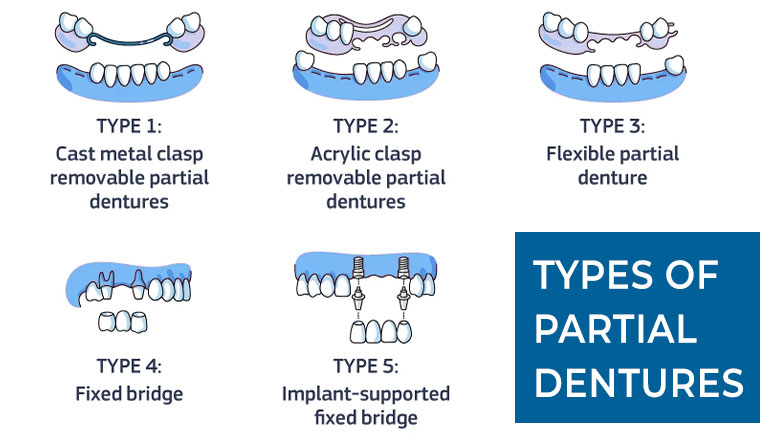
Benefits of choosing partial dentures
Choosing partial dentures can bring a variety of benefits to individuals experiencing tooth loss:
Affordability: In comparison to dental implants, partial dentures usually come at a lower initial cost. For individuals on a tight budget, this makes partial dentures a feasible option for restoring teeth without breaking the bank.
Improved Appearance: Partial dentures can dramatically enhance one’s appearance by filling in gaps where teeth are missing, allowing individuals to smile confidently once again. The artificial teeth are designed to blend seamlessly with natural teeth, creating a cohesive look.
Improved Function: Individuals with partial dentures often experience restored chewing ability, allowing them to enjoy a wider variety of foods. Additionally, many report improved clarity in speech, which can be a significant boost to one’s social interactions.
Relatively Easy to Adjust To: While there may be an initial adjustment period, most people adapt to wearing partial dentures relatively quickly. With practice, eating and speaking become easier, and the discomfort typically subsides.
Removable for Cleaning: Unlike dental implants, partial dentures can be easily removed for cleaning. This feature facilitates daily maintenance and reduces the risk of infections and gum disease, as proper care can be more effectively managed.
Potential drawbacks of partial dentures
Despite their numerous advantages, partial dentures also come with potential downsides that should be carefully considered:
Limited Durability: Parkinson’s dentures are generally less durable than dental implants. While they can last several years, they may require replacement every 5 to 10 years, leading to ongoing costs over time.
Possible Bone Loss: Without the stimulation provided by tooth roots, the underlying jawbone may deteriorate over time, leading to bone loss. This is a significant concern for individuals considering long-term solutions for tooth replacement.
Changes in Speech: Some individuals may experience temporary changes in their speech during the initial adjustment phase. Articulating certain sounds may feel different, although most people eventually adjust and regain their normal speech patterns.
Difficulty with Certain Foods: The retention and stability of partial dentures can vary, depending on the type of food consumed. For instance, sticky or hard foods may pose challenges, potentially leading to discomfort or even displacement of the dentures.
Potential for Gum Irritation: If not properly fitted or cared for, partial dentures can irritate the gums or surrounding soft tissues. Regular dental check-ups and adjustments are crucial to ensure optimal fit and comfort.
Overview of dental implants
Dental implants represent a revolutionary advancement in tooth replacement options. By mimicking the structure of natural teeth, they provide a robust and stable foundation for artificial teeth.
Definition and types of dental implants
Dental implants are essentially artificial tooth roots surgically inserted into the jawbone. They offer a long-term solution for replacing missing teeth and consist of three primary components:
Implant Fixture: This small titanium post is surgically placed into the jawbone, serving as the artificial tooth root. It fuses with the bone through a process called osseointegration, creating a solid anchor for the artificial tooth.
Abutment: The abutment is a connector that attaches to the implant fixture and serves as a platform for the dental crown. It is essential for the overall stability of the dental prosthetic.
Dental Crown: The dental crown is the visible part of the implant that resembles a natural tooth. Made from materials such as porcelain or ceramic, it restores the appearance and function of the missing tooth.
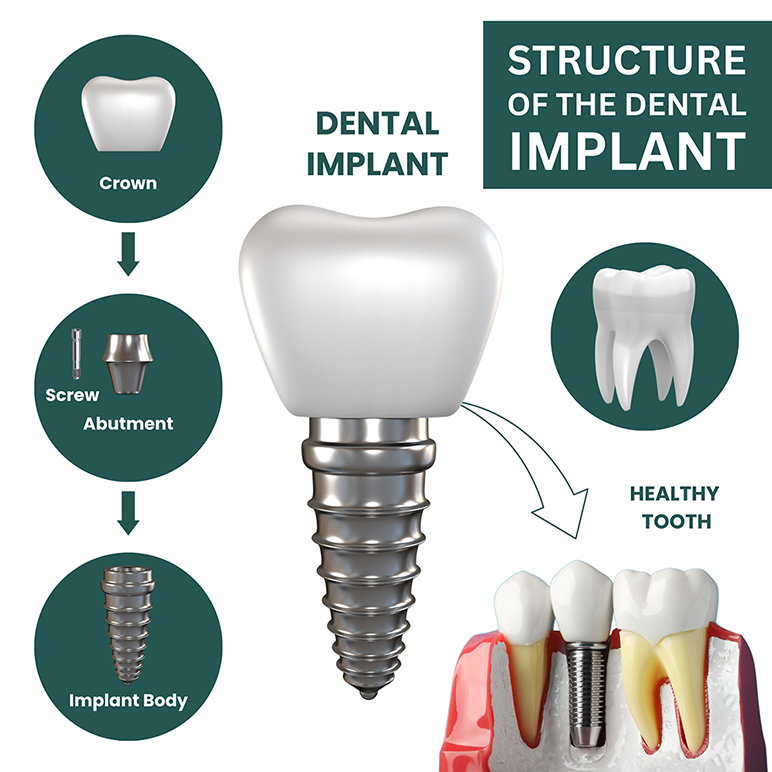
There are two primary types of dental implants:
Endosteal Implants: Endosteal implants are the most common type. They consist of a screw-shaped post inserted directly into the jawbone, providing a strong foundation for the artificial tooth.
Subperiosteal Implants: These implants are placed under the gum tissue and on top of the jawbone. They are mainly used when there isn’t enough bone density to support endosteal implants. Subperiosteal implants are less common but remain a valid option for certain patients.
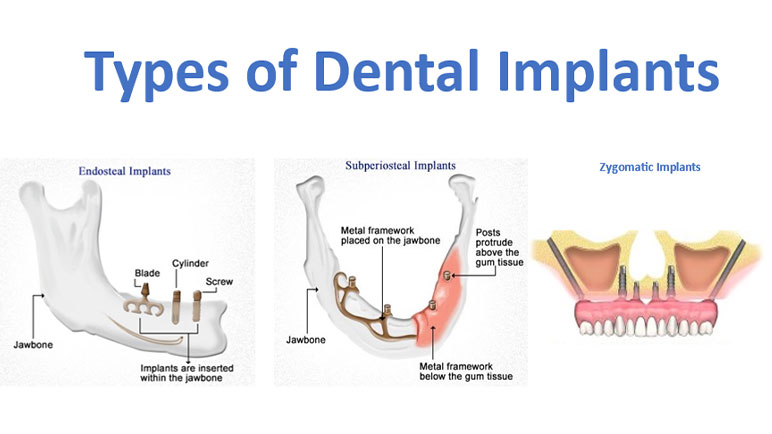
Advantages of dental implants
Dental implants are often favored over partial dentures for various reasons:
Durability and Longevity: With proper care and maintenance, dental implants are designed to last a lifetime. Their exceptional durability makes them an attractive long-term investment compared to partial dentures, which require periodic replacements.
Strong and Stable: The osseointegration process ensures that dental implants are firmly anchored to the jawbone, providing immense stability for chewing and speaking. This stability allows individuals to eat a wide range of foods without fear of displacement.
Improved Oral Health: Dental implants stimulate the jawbone, inhibiting bone loss and promoting overall oral health. Unlike partial dentures, which merely sit atop the gums, implants engage the bone in a way that helps maintain its density.
Enhanced Aesthetics: Because dental implants closely mimic the appearance of natural teeth, they can significantly enhance one’s smile. Patients often report that they feel more confident and satisfied with the aesthetic results of implants.
Improved Speech and Function: Patients frequently experience improvements in speech and chewing efficiency with dental implants. Since they function like natural teeth, individuals can communicate and eat without the complications associated with removable dentures.
Challenges and considerations with implants
While dental implants offer numerous benefits, there are also challenges and considerations to keep in mind:
Surgical Procedure: The placement of dental implants involves a surgical procedure that requires proper healing time. Patients may experience some discomfort following the surgery, necessitating recovery time before the final restoration.
Cost: Dental implants are generally more expensive than partial dentures, which can make them less accessible for some individuals. The initial investment may seem daunting, but it’s important to consider the long-term benefits and potential savings on future replacements.
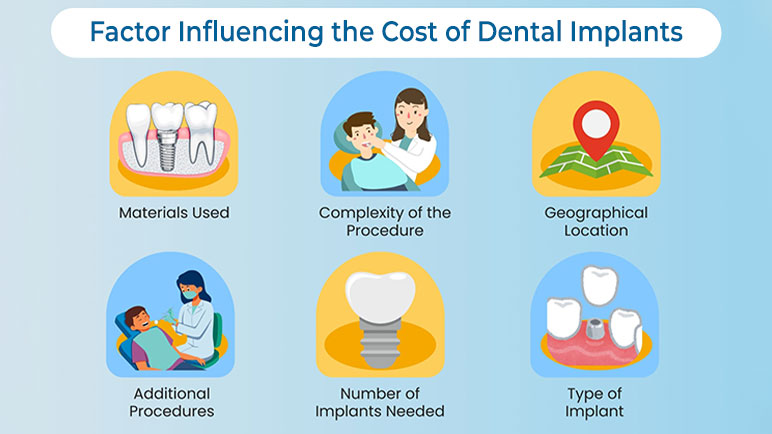
Not Suitable for Everyone: Certain medical conditions, such as uncontrolled diabetes or weakened immune systems, can affect an individual’s eligibility for implants. Consulting with a qualified dental professional is critical for determining candidacy.
Bone Grafting May Be Necessary: In instances where the jawbone lacks sufficient density, a bone grafting procedure may be required prior to implant placement. This additional step can increase both the complexity and cost of the overall treatment plan.
Potential for Complications: Though rare, complications such as infection or nerve damage can occur following implant procedures. Awareness of these risks is essential for making informed decisions regarding dental implants.
Comparing effectiveness of partial dentures and implants
When considering dental implants vs dentures, it’s essential to evaluate their effectiveness across multiple dimensions, including longevity, aesthetics, and maintenance requirements.
Longevity and durability
The longevity of dental implants is unmatched, boasting a success rate of over 95% for up to 20 years or longer. When maintained properly, implants can certainly last a lifetime. In contrast, partial dentures have a limited lifespan, often needing replacement every 5 to 10 years due to wear and tear. As the acrylic or nylon resin base deteriorates, functionality may decrease, ultimately requiring costly replacements.
Aesthetic outcomes and natural feel
In terms of aesthetics, dental implants excel. They seamlessly integrate with natural teeth, offering a lifelike appearance that instills confidence in wearers. Functionally, implants perform like natural teeth, allowing users to enjoy meals and conversations without hesitation. On the other hand, while partial dentures can enhance appearance, they may sometimes feel noticeably different from natural teeth. Some individuals report that the artificial feel can affect their confidence during speaking or eating.
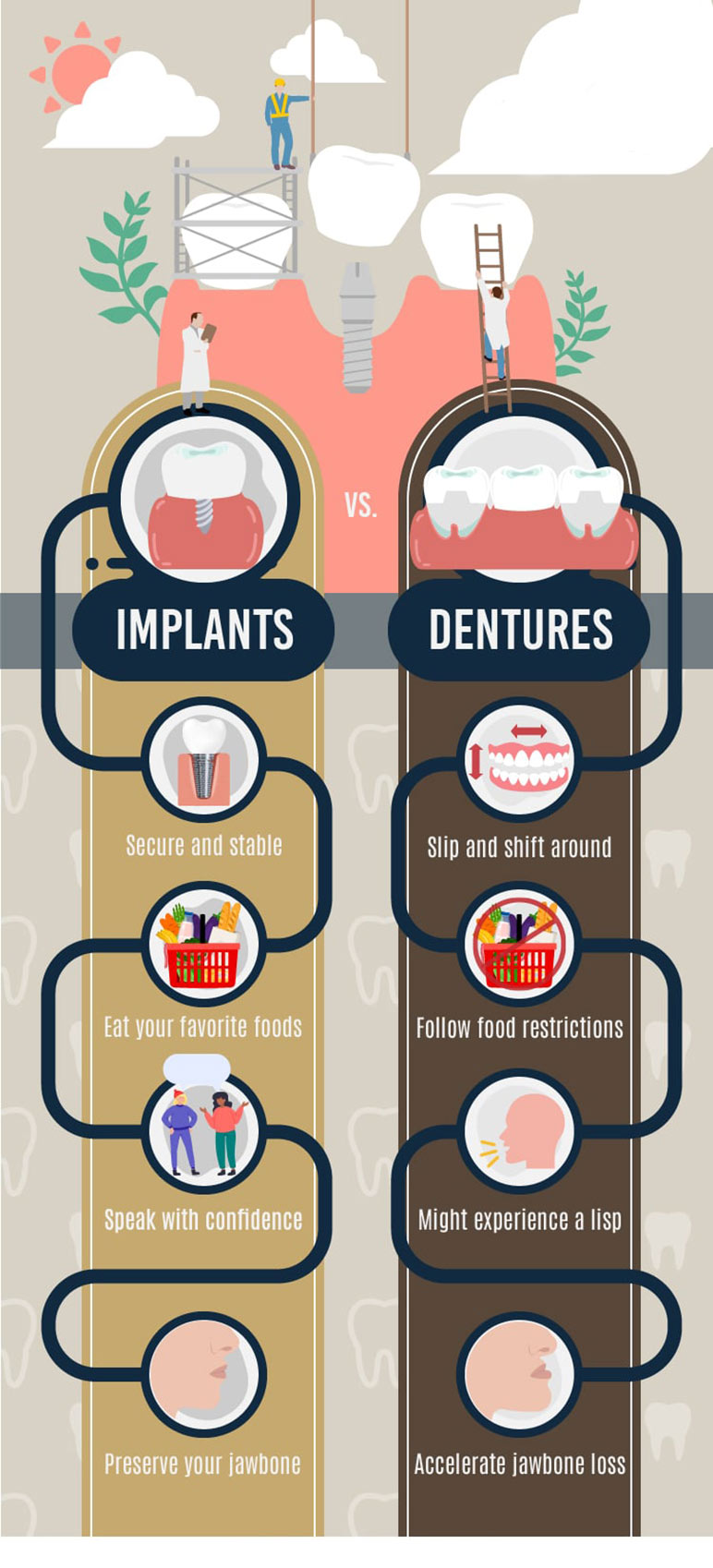
Maintenance and care requirements
From a maintenance perspective, dental implants require minimal upkeep after the initial healing period. Regular brushing, flossing, and professional dental checkups help prevent infections and maintain oral hygiene effectively. Conversely, partial dentures require more frequent attention. They must be removed daily for cleaning and soaked in denture cleaner periodically to avoid bacterial buildup. Neglecting such maintenance may lead to gum irritation and other complications.
Cost considerations for partial dentures and implants
The financial implications of choosing between partial dentures and dental implants are significant factors that warrant careful consideration. Understanding both initial and long-term costs can guide your decision-making.
Initial costs versus long-term investment
Typically, partial dentures present a lower initial cost compared to dental implants. The higher price tag of implants reflects their complex surgical procedures and the materials involved. However, viewing implants as a long-term investment can shift the perspective. Given their durability and lifespan, dental implants may prove more cost-effective over time, especially when considering the ongoing costs associated with partial dentures, including replacements and repairs.
Insurance coverage and financial assistance options
Both partial dentures and implants may be partially covered by dental insurance plans, but coverage varies widely. Many insurance providers may cover certain aspects of the cost, while some focus more on routine care rather than major procedures like implants. Researching your specific plan and discussing coverage options with your dentist is vital for understanding the financial implications of your chosen solution.
Additionally, some financial assistance options, such as payment plans and dental financing programs, are available to alleviate the upfront costs associated with either procedure. Exploring these options can help you navigate the financial landscape effectively.
Budgeting for oral health solutions
Before deciding, it’s prudent to create a realistic budget that encompasses the full cost of either option. Account for the initial investment, potential future costs (like replacements or maintenance), and any insurance coverage that may apply. Evaluating your overall financial capacity and prioritizing your oral health needs play a critical role in making a well-informed decision.
Below here is our Saigon Dental Implants Center price refer:
| SINGLE-TOOTH IMPLANTS | DENTAL COST (USD) | DISCOUNT PRICE (USD) |
| Premium Korean implant (Dentium) | 800 | 720 |
| US implant (Dentium) | 960 | 880 |
| Italian implant (C-Tech) | 1,000 | 920 |
| US implant (Superline) | 1,080 | 1,000 |
| France/Switzerland (Kontact / Neodent) | 1,240 | 1,080 |
| Super Active (Nobel/Straumann) | 1,600 | 1,440 |
| Titanium-porcelain restoration | 160 | |
| Full Zirconia CAD/CAM Crown on Implant | 280 | |
| FULL 1 JAW IMPLANTS | DENTAL IMPLANTS COST (USD) | DISCOUNT PRICE (USD) |
| Implant ALL ON 4 Dentium (Korea) (Include screw only + Temporary strengthened crown) | 6,000 | 4,000 |
| Implant ALL ON 4 Straumann Neodent (Swiss) (Include screw only + Temporary strengthened crown) | 7,000 | 5,200 |
| Implant ALL ON 4 Nobel / Straumann SLA Active (Include screw only + Temporary strengthened crown) | 9,000 | 7,200 |
| Implant ALL ON 6 Dentium (Korea) (Include screw only + Temporary strengthened crown) | 8,000 | 5,600 |
| Implant ALL ON 6 Straumann Neodent (Swiss) (Include screw only + Temporary strengthened crown) | 9,000 | 7,600 |
| Implant ALL ON 6 Nobel / Straumann SLA Active (Include screw only + Temporary strengthened crown) | 12,000 | 10,400 |
| Zygomatic Implants – “All on 4”, full arch, fixed bridge | 13,000 | |
| Final bar + High Acrylic Permanent teeth (4–6 Months Later) | 1,400 | |
| Final bar + Full Zirconia CAD/CAM teeth (4–6 Months Later) | 4,000 | |
|
For patients deciding on Implants All-On treatment VIETNAM IMPLANT CENTER will give customers a gift package, including: |
|
|
Making the right choice between partial dentures vs implants
Choosing the right tooth replacement solution requires a thoughtful approach that considers personal circumstances, preferences, and lifestyle.
Factors to consider in decision-making
Several key factors should influence your decision-making process when contemplating partial dentures or dental implants. For instance, the number of missing teeth plays a pivotal role. If you’re missing a few teeth in close proximity, partial dentures may suffice, while more extensive tooth loss could warrant dental implants for a comprehensive solution.
Additionally, individual lifestyle factors—such as dietary habits, oral hygiene practices, and general health considerations—should inform your choice. Someone who values convenience and low-maintenance solutions might lean toward implants, whereas others focused on immediate affordability might prefer partial dentures.
Consulting with dental professionals
Consulting with qualified dental professionals is crucial in navigating the complexities of tooth replacement options. Dentists can provide personalized assessments, elaborating on the suitability of each option based on your unique circumstances. They can address concerns, answer questions, and guide you through the process of selecting the best solution to meet your goals.
Personal preferences and lifestyle considerations
Personal preferences also carry weight in the decision-making process. Some individuals prioritize aesthetics and may prefer the natural look and feel of dental implants. Others might see partial dentures as a more manageable choice that offers immediate restoration without surgical intervention.
Additionally, if your lifestyle includes frequent travel or a busy schedule, the ease of maintaining partial dentures versus the durability and resilience of implants may factor into your ultimate decision.
Conclusion
In the debate of partial dentures vs implants, there is no one-size-fits-all answer. Each option presents unique advantages and disadvantages tailored to different individual needs. Partial dentures offer affordability and ease of use, making them suitable for specific scenarios, while dental implants provide a long-lasting and aesthetically pleasing solution ideal for those seeking permanence.
Ultimately, the choice between implants and partial dentures rests on a combination of factors, including the extent of tooth loss, financial considerations, individual preferences, and overall lifestyle. Collaborating with dental professionals and conducting thorough research will empower you to make an informed decision that aligns with your oral health goals, ensuring a bright and confident smile for the future.

 Google Reviews
Google Reviews Call
Call
SAIGON IMPLANT CENTER
Best dentist in Vietnam
Saigon Implant Center - Dental Clinic utilizes the latest technology for specialized treatment in the field of Single implant, full jaw implants, All on 4 implants, All on 6 implants, Zygoma implant....
SAIGON IMPLANT CENTER
Best dentist in Vietnam
Saigon Implant Center - Dental Clinic utilizes the latest technology for specialized treatment in the field of Single implant, full jaw implants, All on 4 implants, All on 6 implants, Zygoma implant....